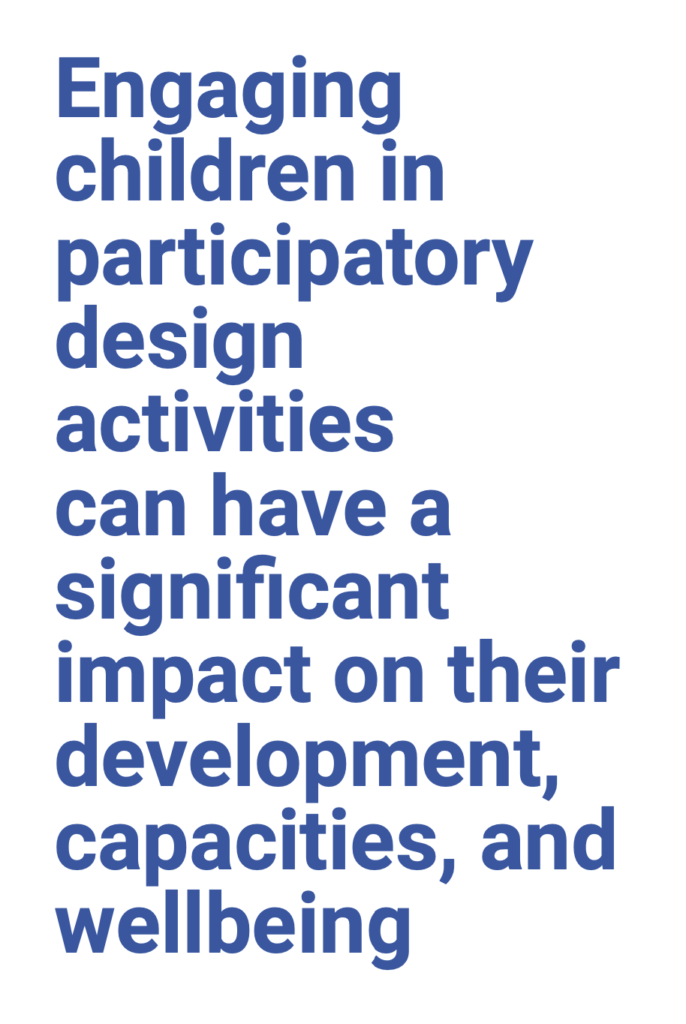By outlining the link between child wellbeing and the built environment, this section makes a case for child responsive built interventions. Research has shown a correlation between the built environment and children’s wellbeing: The ‘Neighbourhood built environment may be important for reducing mental health difficulties and increasing mental health competence in young children’ (Alderton et al., 2019). Neighbourhood design can foster a sense of safety, positive identity and belonging, reduce tensions and provide protection from traumatic symptoms in children (Akkesson and Denov, 2017, p. 140).
Children’s participation in co-design processes is as valuable as the quality of the final designs. Co-design is an approach to built interventions that has the potential to create local human capacity and to contribute to the sustainability of the end product. The sustainability will not be dependent on external inputs once the participatory process has been successfully completed (Hussain et al., 2012). Decision makers who engage in children’s participation will be able to make better informed choices, leading to better outcomes.
Co-designing with children means also engaging their caregivers, siblings, educators and other important members of the children’s networks.
The International Bureau for Children’s Rights (2018) outlines six principles for children’s participation, which can be applied to co-design processes and underpin this handbook:
Participation is relevant and meaningful to children.
Participation is voluntary and informed.
Participation will do no harm to the child.
Participation is inclusive of and accessible to all children.
Participation processes are managed by trained, competent personnel.
Participation processes are implemented and assessed rigorously and professionally.





